Home » Home Inspection Blog » What is a Home Inspection
What is a Home Inspection
What is a Home Inspection:
A Home Inspection according to wikipedia is a limited, non-invasive examination of the condition of a home, often in connection with the sale of that home. Home inspections are usually conducted by a home inspector who has the training and certifications to perform such inspections. The inspector prepares and delivers to the client a written report of findings. The client then uses the knowledge gained to make informed decisions about their pending real estate purchase. The home inspector describes the condition of the home at the time of inspection but does not guarantee future condition, efficiency, or life expectancy of systems or components.
In layman terms this basically means a qualified/certified expert aka Home Inspector, using a checklist, aided by tools, supported by software, performs an inspection of your home and delivers a report that reflects the current state of the home.
Let us break this down further.
1. The Home Inspector
The Home Inspector is the most important piece of the inspection. He/She has to be a person whose knowledge about the home inspection process is second to none. You would want a person who is solely focussed on home inspections and not someone who does home inspections as a side business. You should also look out for individuals who possess certifications and/or trainings by accredited organizations such as InterNACHI. Everyone can claim to be a home inspector but what differentiates the best from the rest is knowledge, expertise and certifications. A thing to note is that the home inspector is always neutral and does not propose the next steps or recommend the vendors that should/could perform corrective measures.

2. The checklist
The checklist is an essential component of the inspection. The checklist i.e the list of items to be checked in each home inspection, has to be localized for the region where the inspection is being conducted. It should also be comprehensive and should make sure nothing critical is missed out and everything however minor is included. The checklist should group similar checks into different categories for ease of use.
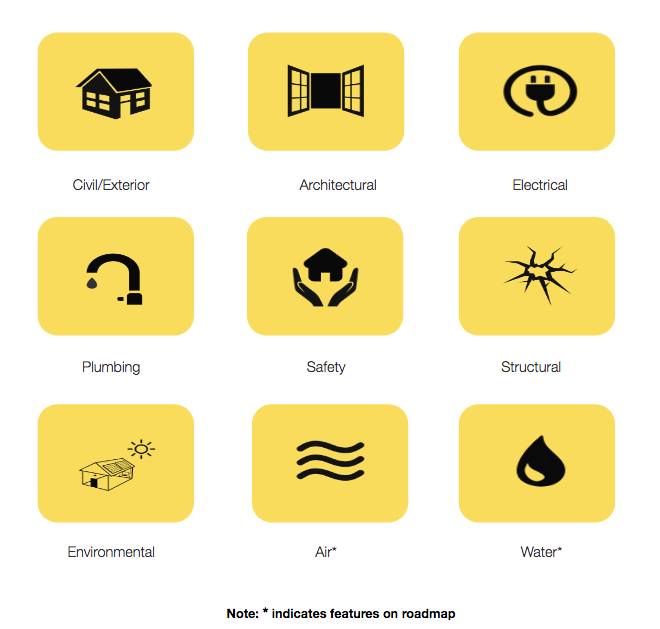
3. Tools
Tools are what make an inspection accurate. There are many issues in a home that are not perceptible to the naked eye and therefore cannot be caught by a purely visual inspection. Therefore tools need to be used that will enhance the probability of catching such issues. Moisture in walls is one such issue. Recently painted walls might look bright and shiny and feel dry when touched by the hand – but the moisture meter or a thermal camera will be able to give a much more accurate indication of the moisture content of the wall. Hollowness of tiles is another example where a tool, when used in the right way, is able to help catch issues.
4. The software
Use of software in all stages of a home inspection transaction helps both the home owner and the home inspector and move the industry towards smoother home inspection transactions from start to finish. There are different benefits of using software:
Faster turnaround times
Instant Collaboration
No oversights
Effort Reduction
Audit trail
Ease of use
Annotated reports
You can look at our detailed article about the role that software plays in home inspections here – https://www.homeinspektor.com/how-software-can-help-with-performing-better-home-inspections/
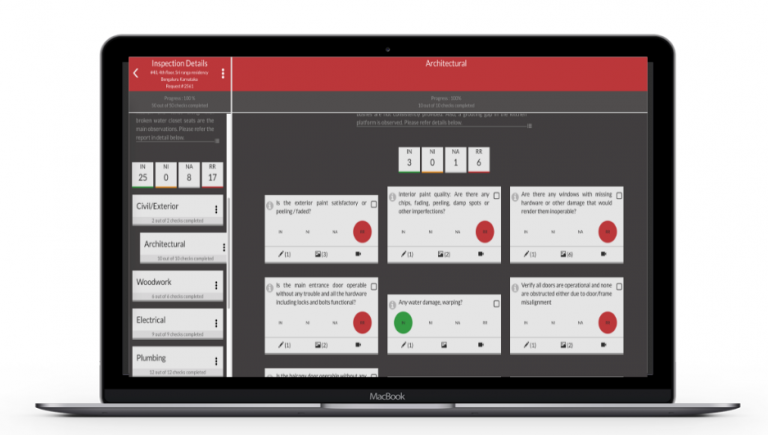
5. The Inspection
The Inspection is basically when all of the above (the home inspector, the checklist, the tools, software) come together seamlessly in a way that all issues are found, all the customer’s concerns are addressed and he/she are left smiling at the end of it all.

6. The Report
The report is the deliverable handed over to the customer at the end of it all. It should be comprehensive, self explanatory and use annotated pictures wherever possible so that the customer is able to follow up with the builder/contractor to get the issues fixed. The report should be electronically available for reference anytime in the future and on any device possible. The customer would use the report to decide on the next steps regarding the home.
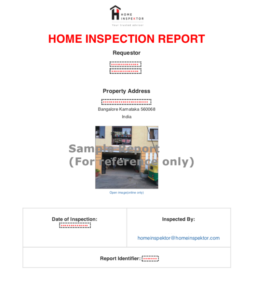
Thus, as outlined above, there are many components of a home inspection. All of them are important and have to come together to make sure that the home inspection is perfect indeed. When you select a home inspector or a home inspection company, do make sure that all components are covered. Missing one component can make the difference between a good home inspection and a great one. I trust this answers the question what is a home inspection.
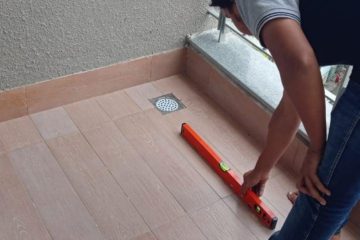
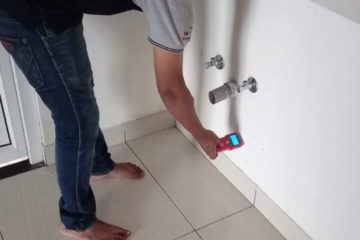
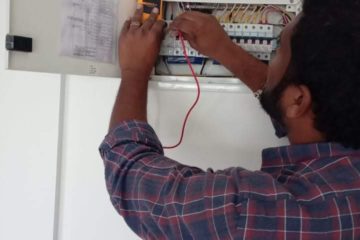
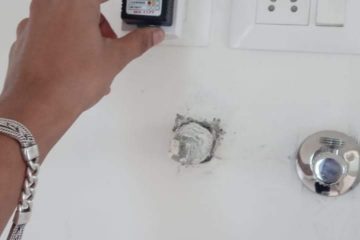
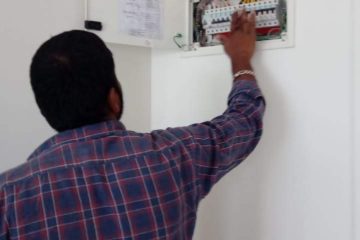
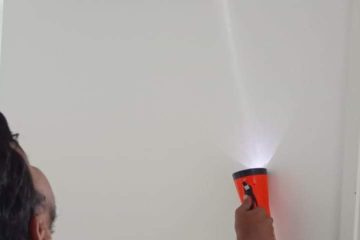
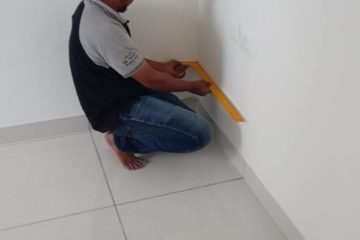
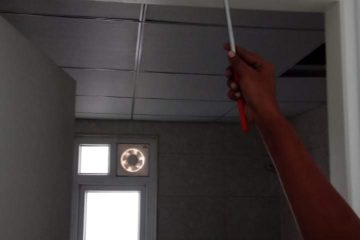
153 Comments
Property inspection · January 14, 2021 at 11:11 am
Everyone must read this blog, provided good and useful information on Property inspection.
Thanks,keep updating.
Repost: What is a Home Inspection | HomeInspeKtor | Your Trusted Advisor · August 17, 2018 at 3:02 pm
[…] Read more […]
HomeInspeKtor’s service is thorough, scientific and delivered professionally! | HomeInspeKtor | Your Trusted Advisor · March 30, 2020 at 6:34 pm
[…] you enjoyed reading a testimonial about a pre delivery home inspection performed by the best home inspection company in Bangalore – HomeInspeKtor and get to know about […]
Video Testimonial: Work was very extensive and we are very happy | HomeInspeKtor | Your Trusted Advisor · March 31, 2020 at 9:44 am
[…] you enjoyed watching a testimonial about a pre delivery home inspection performed by the best home inspection company in Bangalore – HomeInspeKtor and get to know about […]
In the beginning I was totally against professional inspection and now I will say it's worth it. | HomeInspeKtor | Your Trusted Advisor · March 31, 2020 at 3:39 pm
[…] you enjoyed reading a testimonial about a pre delivery home inspection performed by the best home inspection company in Bangalore – HomeInspeKtor and get to know about […]
Given confidence to discuss with builder and luckily they have accepted most of the suggested changes! | HomeInspeKtor | Your Trusted Advisor · March 31, 2020 at 3:40 pm
[…] you enjoyed reading a testimonial about a pre delivery home inspection performed by the best home inspection company in Bangalore – HomeInspeKtor and get to know about […]
HomeInspeKtor professionalism, knowledge and expertise impressed us in every step | HomeInspeKtor | Your Trusted Advisor · March 31, 2020 at 3:40 pm
[…] you enjoyed reading a testimonial about a pre delivery home inspection performed by the best home inspection company in Bangalore – HomeInspeKtor and get to know about […]
I knew why I need to engage a 3rd party inspector, but was amazed with the 'What' and 'How'! | HomeInspeKtor | Your Trusted Advisor · March 31, 2020 at 5:11 pm
[…] you enjoyed reading a testimonial about a pre delivery home inspection performed by the best home inspection company in Bangalore – HomeInspeKtor and get to know about […]
The price of inspection is a fraction of the cost of the house, and is an investment that is worth it! | HomeInspeKtor | Your Trusted Advisor · March 31, 2020 at 5:11 pm
[…] you enjoyed reading a testimonial about a pre delivery home inspection performed by the best home inspection company in Bangalore – HomeInspeKtor and get to know about […]
I have studied the market & advice you all not to fall prey for cheap service providers! | HomeInspeKtor | Your Trusted Advisor · March 31, 2020 at 5:11 pm
[…] you enjoyed reading a testimonial about a pre delivery home inspection performed by the best home inspection company in Bangalore – HomeInspeKtor and get to know about […]
Detailed report with screenshots was easy to understand by us as well as the project engineer! | HomeInspeKtor | Your Trusted Advisor · April 1, 2020 at 3:45 pm
[…] you enjoyed reading a testimonial about a pre delivery home inspection performed by the best home inspection company in Bangalore – HomeInspeKtor and get to know about […]
Need to look beyond the cost & look for right qualified team having necessary home inspection certification, proven track record with good customer feedback! | HomeInspeKtor | Your Trusted Advisor · April 1, 2020 at 5:10 pm
[…] you enjoyed reading a testimonial about a pre delivery home inspection performed by the best home inspection company in Bangalore – HomeInspeKtor and get to know about […]
Probably the most professional service I have taken in the home buying journey! | HomeInspeKtor | Your Trusted Advisor · April 1, 2020 at 5:11 pm
[…] you enjoyed reading a testimonial about a pre delivery home inspection performed by the best home inspection company in Bangalore – HomeInspeKtor and get to know about […]
Hopefully, the standards of Indian Builders improve! | HomeInspeKtor | Your Trusted Advisor · April 1, 2020 at 5:11 pm
[…] you enjoyed reading a testimonial about a pre delivery home inspection performed by the best home inspection company in Bangalore – HomeInspeKtor and get to know about […]
I had to look beyond costs and evaluate a genuine certified home inspection specialists! | HomeInspeKtor | Your Trusted Advisor · April 1, 2020 at 6:48 pm
[…] you enjoyed reading a testimonial about a pre delivery home inspection performed by the best home inspection company in Bangalore – HomeInspeKtor and get to know about […]
This is an invaluable service especially if one lives abroad! | HomeInspeKtor | Your Trusted Advisor · April 2, 2020 at 5:07 pm
[…] you enjoyed reading a testimonial about a pre delivery home inspection performed by the best home inspection company in Bangalore – HomeInspeKtor and get to know about […]
Truly pleasant surprise of professionalism and dedication | HomeInspeKtor | Your Trusted Advisor · April 2, 2020 at 5:07 pm
[…] you enjoyed reading a testimonial about a pre delivery home inspection performed by the best home inspection company in Bangalore – HomeInspeKtor and get to know about […]
Found a valuable partner who was looking out for my interests! | HomeInspeKtor | Your Trusted Advisor · April 2, 2020 at 6:12 pm
[…] you enjoyed reading a testimonial about a pre delivery home inspection performed by the best home inspection company in Bangalore – HomeInspeKtor and get to know about […]
Truly benefited by your service and we look forward to get your service again in future! | HomeInspeKtor | Your Trusted Advisor · April 2, 2020 at 7:04 pm
[…] you enjoyed reading a testimonial about a pre delivery home inspection performed by the best home inspection company in Bangalore – HomeInspeKtor and get to know about […]
The team uses qualified instruments for inspection of structural, plumbing and electrical systems + aesthetics of the structure! | HomeInspeKtor | Your Trusted Advisor · April 3, 2020 at 5:54 pm
[…] you enjoyed reading a testimonial about a pre delivery home inspection performed by the best home inspection company in Bangalore – HomeInspeKtor and get to know about […]
Highly recommend HomeInspeKtor for their detailed report! | HomeInspeKtor | Your Trusted Advisor · April 3, 2020 at 5:54 pm
[…] you enjoyed reading a testimonial about a pre delivery home inspection performed by the best home inspection company in Bangalore – HomeInspeKtor and get to know about […]
Excellent service - Right from discussions to planning and then to execution! | HomeInspeKtor | Your Trusted Advisor · April 3, 2020 at 7:14 pm
[…] you enjoyed reading a testimonial about a pre delivery home inspection performed by the best home inspection company in Bangalore – HomeInspeKtor and get to know about […]
Better that every common owner should follow such professional inspection! | HomeInspeKtor | Your Trusted Advisor · April 4, 2020 at 4:09 pm
[…] you enjoyed reading a testimonial about a pre delivery home inspection performed by the best home inspection company in Bangalore – HomeInspeKtor and get to know about […]
My experience with HomeInspeKtor has been very good | HomeInspeKtor | Your Trusted Advisor · April 4, 2020 at 4:09 pm
[…] you enjoyed reading a testimonial about a pre delivery home inspection performed by the best home inspection company in Bangalore – HomeInspeKtor and get to know about […]
Team did a real sound & exhaustive job | HomeInspeKtor | Your Trusted Advisor · April 4, 2020 at 4:10 pm
[…] you enjoyed reading a testimonial about a pre delivery home inspection performed by the best home inspection company in Bangalore – HomeInspeKtor and get to know about […]
Impossible for us as laymen to notice issues which have been raised by their report! | HomeInspeKtor | Your Trusted Advisor · April 4, 2020 at 5:10 pm
[…] you enjoyed reading a testimonial about a pre delivery home inspection performed by the best home inspection company in Bangalore – HomeInspeKtor and get to know about […]
Professionalism is appreciated! | HomeInspeKtor | Your Trusted Advisor · April 4, 2020 at 6:13 pm
[…] you enjoyed reading a testimonial about a pre delivery home inspection performed by the best home inspection company in Bangalore – HomeInspeKtor and get to know about […]
Worth the money & is miniscule compared to what we pay the builder! | HomeInspeKtor | Your Trusted Advisor · April 6, 2020 at 12:15 pm
[…] you enjoyed reading a testimonial about a pre delivery home inspection performed by the best home inspection company in Bangalore – HomeInspeKtor and get to know about […]
They are the BEST! | HomeInspeKtor | Your Trusted Advisor · April 6, 2020 at 4:17 pm
[…] you enjoyed reading a testimonial about a pre delivery home inspection performed by the best home inspection company in Bangalore – HomeInspeKtor and get to know about […]
For your dream home inspection, HomeInspeKtor is highly recommended ! | HomeInspeKtor | Your Trusted Advisor · April 6, 2020 at 4:17 pm
[…] you enjoyed reading a testimonial about a pre delivery home inspection performed by the best home inspection company in Bangalore – HomeInspeKtor and get to know about […]
It was very helpful; definitely recommend their services! | HomeInspeKtor | Your Trusted Advisor · April 6, 2020 at 4:17 pm
[…] you enjoyed reading a testimonial about a pre delivery home inspection performed by the best home inspection company in Bangalore – HomeInspeKtor and get to know about […]
Additional Benefits of Home Inspections in the new world | HomeInspeKtor | Your Trusted Advisor · April 7, 2020 at 9:35 am
[…] you enjoyed reading this blog about home inspections written by the best home inspection company in Bangalore – HomeInspeKtor and get to know about […]
Very happy with the result! | HomeInspeKtor | Your Trusted Advisor · April 7, 2020 at 3:23 pm
[…] you enjoyed reading a testimonial about a pre delivery home inspection performed by the best home inspection company in Bangalore – HomeInspeKtor and get to know about […]
Able to find out quite a lot of issues that the builders have accepted to work on! | HomeInspeKtor | Your Trusted Advisor · April 7, 2020 at 4:11 pm
[…] you enjoyed reading a testimonial about a pre delivery home inspection performed by the best home inspection company in Bangalore – HomeInspeKtor and get to know about […]
Truly professional and looked for the minute details in my apartment! | HomeInspeKtor | Your Trusted Advisor · April 7, 2020 at 4:58 pm
[…] you enjoyed reading a testimonial about a pre delivery home inspection performed by the best home inspection company in Bangalore – HomeInspeKtor and get to know about […]
Checked each and every specification mentioned by the builder! | HomeInspeKtor | Your Trusted Advisor · April 7, 2020 at 4:59 pm
[…] you enjoyed reading a testimonial about a pre delivery home inspection performed by the best home inspection company in Bangalore – HomeInspeKtor and get to know about […]
Inspection exceeded my expectation and very impressed, how professionally it was done! | HomeInspeKtor | Your Trusted Advisor · April 7, 2020 at 4:59 pm
[…] you enjoyed reading a testimonial about a pre delivery home inspection performed by the best home inspection company in Bangalore – HomeInspeKtor and get to know about […]
Team identified many issues which I could not notice myself! | HomeInspeKtor | Your Trusted Advisor · April 7, 2020 at 5:48 pm
[…] you enjoyed reading a testimonial about a pre delivery home inspection performed by the best home inspection company in Bangalore – HomeInspeKtor and get to know about […]
Good inspection team with attention to detail!!! | HomeInspeKtor | Your Trusted Advisor · April 7, 2020 at 6:43 pm
[…] you enjoyed reading a testimonial about a pre delivery home inspection performed by the best home inspection company in Bangalore – HomeInspeKtor and get to know about […]
Causes of Dampness | HomeInspeKtor | Your Trusted Advisor · April 8, 2020 at 10:09 am
[…] you enjoyed reading this blog about home inspections written by the best home inspection company in Bangalore – HomeInspeKtor and get to know about […]
A fabulous job by going into minute details & highlighted with their amazing reporting structure! | HomeInspeKtor | Your Trusted Advisor · April 8, 2020 at 12:38 pm
[…] you enjoyed reading a testimonial about a pre delivery home inspection performed by the best home inspection company in Bangalore – HomeInspeKtor and get to know about […]
These guys gave me confidence by their professionalism! | HomeInspeKtor | Your Trusted Advisor · April 8, 2020 at 3:54 pm
[…] you enjoyed reading a testimonial about a pre delivery home inspection performed by the best home inspection company in Bangalore – HomeInspeKtor and get to know about […]
Available to answer all your queries before and after the inspection! | HomeInspeKtor | Your Trusted Advisor · April 8, 2020 at 4:58 pm
[…] you enjoyed reading a testimonial about a pre delivery home inspection performed by the best home inspection company in Bangalore – HomeInspeKtor and get to know about […]
Professional and helpful! | HomeInspeKtor | Your Trusted Advisor · April 8, 2020 at 4:58 pm
[…] you enjoyed reading a testimonial about a pre delivery home inspection performed by the best home inspection company in Bangalore – HomeInspeKtor and get to know about […]
Snags were explained in precise and unbiased way without sounding alarmist at any time! | HomeInspeKtor | Your Trusted Advisor · April 8, 2020 at 4:59 pm
[…] you enjoyed reading a testimonial about a pre delivery home inspection performed by the best home inspection company in Bangalore – HomeInspeKtor and get to know about […]
A bunch of young enthusiastic group, giving a draft report in 5 minutes post inspection! | HomeInspeKtor | Your Trusted Advisor · April 8, 2020 at 6:08 pm
[…] you enjoyed reading a testimonial about a pre delivery home inspection performed by the best home inspection company in Bangalore – HomeInspeKtor and get to know about […]
They identified issues which I couldn't notice, after checking thoroughly myself! | HomeInspeKtor | Your Trusted Advisor · April 8, 2020 at 6:08 pm
[…] you enjoyed reading a testimonial about a pre delivery home inspection performed by the best home inspection company in Bangalore – HomeInspeKtor and get to know about […]
Safe Practices at Construction Sites | HomeInspeKtor | Your Trusted Advisor · April 9, 2020 at 9:03 am
[…] you enjoyed reading this blog about home inspections written by the best home inspection company in Bangalore – HomeInspeKtor and get to know about […]
Effects of Dampness | HomeInspeKtor | Your Trusted Advisor · April 9, 2020 at 9:53 am
[…] you enjoyed reading this blog about home inspections written by the best home inspection company in Bangalore – HomeInspeKtor and get to know about […]
Excellent service! | HomeInspeKtor | Your Trusted Advisor · April 9, 2020 at 3:35 pm
[…] you enjoyed reading a testimonial about a pre delivery home inspection performed by the best home inspection company in Bangalore – HomeInspeKtor and get to know about […]
Shall recommend their service, they have a very capable team! | HomeInspeKtor | Your Trusted Advisor · April 9, 2020 at 3:35 pm
[…] you enjoyed reading a testimonial about a pre delivery home inspection performed by the best home inspection company in Bangalore – HomeInspeKtor and get to know about […]
I would not have found 20% of the issues, if I had done inspection myself!! | HomeInspeKtor | Your Trusted Advisor · April 9, 2020 at 4:44 pm
[…] you enjoyed reading a testimonial about a pre delivery home inspection performed by the best home inspection company in Bangalore – HomeInspeKtor and get to know about […]
Excellent report having all major/minor issues reported! | HomeInspeKtor | Your Trusted Advisor · April 9, 2020 at 4:44 pm
[…] you enjoyed reading a testimonial about a pre delivery home inspection performed by the best home inspection company in Bangalore – HomeInspeKtor and get to know about […]
Overall we are happy about the way you conducted it, and also the customised word report! | HomeInspeKtor | Your Trusted Advisor · April 9, 2020 at 4:44 pm
[…] you enjoyed reading a testimonial about a pre delivery home inspection performed by the best home inspection company in Bangalore – HomeInspeKtor and get to know about […]
Good Service! | HomeInspeKtor | Your Trusted Advisor · April 9, 2020 at 5:51 pm
[…] you enjoyed reading a testimonial about a pre delivery home inspection performed by the best home inspection company in Bangalore – HomeInspeKtor and get to know about […]
Quality inspection done! | HomeInspeKtor | Your Trusted Advisor · April 9, 2020 at 5:51 pm
[…] you enjoyed reading a testimonial about a pre delivery home inspection performed by the best home inspection company in Bangalore – HomeInspeKtor and get to know about […]
Excellent work! | HomeInspeKtor | Your Trusted Advisor · April 9, 2020 at 5:52 pm
[…] you enjoyed reading a testimonial about a pre delivery home inspection performed by the best home inspection company in Bangalore – HomeInspeKtor and get to know about […]
Electrocution and First Aid | HomeInspeKtor | Your Trusted Advisor · April 10, 2020 at 10:16 am
[…] you enjoyed reading this blog about home inspections written by the best home inspection company in Bangalore – HomeInspeKtor and get to know about […]
Etiquette during COVID-19 | HomeInspeKtor | Your Trusted Advisor · April 10, 2020 at 4:21 pm
[…] you enjoyed reading this blog about home inspections written by the best home inspection company in Bangalore – HomeInspeKtor and get to know about […]
HomeInspeKtor are a team of professionals that act as 'auditors' for all home buyers! | HomeInspeKtor | Your Trusted Advisor · April 10, 2020 at 4:21 pm
[…] you enjoyed reading a testimonial about a pre delivery home inspection performed by the best home inspection company in Bangalore – HomeInspeKtor and get to know about […]
Pest Control in your dream home | HomeInspeKtor | Your Trusted Advisor · April 10, 2020 at 5:18 pm
[…] you enjoyed reading this blog about home inspections written by the best home inspection company in Bangalore – HomeInspeKtor and get to know about […]
Found the work to be very professional in nature! | HomeInspeKtor | Your Trusted Advisor · April 11, 2020 at 5:22 pm
[…] you enjoyed reading a testimonial about a pre delivery home inspection performed by the best home inspection company in Bangalore – HomeInspeKtor and get to know about […]
Preventing Dampness - Types of Waterproofing Material | HomeInspeKtor | Your Trusted Advisor · April 13, 2020 at 10:16 am
[…] you enjoyed reading this blog about home inspections written by the best home inspection company in Bangalore – HomeInspeKtor and get to know about […]
Preventing Dampness - Methods | HomeInspeKtor | Your Trusted Advisor · April 13, 2020 at 11:00 am
[…] you enjoyed reading this blog about home inspections written by the best home inspection company in Bangalore – HomeInspeKtor and get to know about […]
Sockets and their functioning | HomeInspeKtor | Your Trusted Advisor · April 14, 2020 at 9:53 am
[…] you enjoyed reading this blog about home inspections written by the best home inspection company in Bangalore – HomeInspeKtor and get to know about […]
In the absence of knowledge and instruments, it is necessary that we use the services of professional! | HomeInspeKtor | Your Trusted Advisor · April 14, 2020 at 10:34 am
[…] you enjoyed reading a testimonial about a pre delivery home inspection performed by the best home inspection company in Bangalore – HomeInspeKtor and get to know about […]
Women as Home Inspectors | HomeInspeKtor | Your Trusted Advisor · April 14, 2020 at 6:42 pm
[…] you enjoyed reading this blog about home inspections written by the best home inspection company in Bangalore – HomeInspeKtor and get to know about […]
Being the 1st time buyer, I could have easily missed many snags! | HomeInspeKtor | Your Trusted Advisor · April 14, 2020 at 6:42 pm
[…] you enjoyed reading a testimonial about a pre delivery home inspection performed by the best home inspection company in Bangalore – HomeInspeKtor and get to know about […]
The team pointed out things that never crossed by mind! | HomeInspeKtor | Your Trusted Advisor · April 14, 2020 at 7:47 pm
[…] you enjoyed reading a testimonial about a pre delivery home inspection performed by the best home inspection company in Bangalore – HomeInspeKtor and get to know about […]
Things to keep in mind during Tiling | HomeInspeKtor | Your Trusted Advisor · April 15, 2020 at 11:19 am
[…] you enjoyed reading this blog about home inspections written by the best home inspection company in Bangalore – HomeInspeKtor and get to know about […]
Gives a general sense of confidence on the state of the apartment! | HomeInspeKtor | Your Trusted Advisor · April 16, 2020 at 4:46 pm
[…] you enjoyed reading a testimonial about a pre delivery home inspection performed by the best home inspection company in Bangalore – HomeInspeKtor and get to know about […]
Would recommend for their thoroughness and professionalism!! | HomeInspeKtor | Your Trusted Advisor · April 16, 2020 at 4:46 pm
[…] you enjoyed reading a testimonial about a pre delivery home inspection performed by the best home inspection company in Bangalore – HomeInspeKtor and get to know about […]
A must for every home buyer even if going with so called A Class Builders and Developers!! | HomeInspeKtor | Your Trusted Advisor · April 16, 2020 at 4:46 pm
[…] you enjoyed reading a testimonial about a pre delivery home inspection performed by the best home inspection company in Bangalore – HomeInspeKtor and get to know about […]
HomeInspeKtor professionalism, knowledge and expertise impressed us in every step -- copy | HomeInspeKtor | Your Trusted Advisor · April 17, 2020 at 4:18 pm
[…] you enjoyed reading a testimonial about a pre delivery home inspection performed by the best home inspection company in Bangalore – HomeInspeKtor and get to know about […]
Our confidence on the builder increased post Inspection! | HomeInspeKtor | Your Trusted Advisor · April 17, 2020 at 7:56 pm
[…] you enjoyed reading a testimonial about a pre delivery home inspection performed by the best home inspection company in Bangalore – HomeInspeKtor and get to know about […]
Making of a lady Civil Engineer, against the wishes of many! | HomeInspeKtor | Your Trusted Advisor · April 18, 2020 at 11:24 am
[…] you enjoyed reading this blog about home inspections written by the best home inspection company in Bangalore – HomeInspeKtor and get to know about […]
Detailed report greatly helped in convincing the builder of the expected standards & forced them to address the issues!! | HomeInspeKtor | Your Trusted Advisor · April 18, 2020 at 6:03 pm
[…] you enjoyed reading a testimonial about a pre delivery home inspection performed by the best home inspection company in Bangalore – HomeInspeKtor and get to know about […]
Very valuable service! | HomeInspeKtor | Your Trusted Advisor · April 18, 2020 at 6:04 pm
[…] you enjoyed reading a testimonial about a pre delivery home inspection performed by the best home inspection company in Bangalore – HomeInspeKtor and get to know about […]
Team identified & marked all of the issues! | HomeInspeKtor | Your Trusted Advisor · April 18, 2020 at 6:04 pm
[…] you enjoyed reading a testimonial about a pre delivery home inspection performed by the best home inspection company in Bangalore – HomeInspeKtor and get to know about […]
For a new home buyer this is a blessing! | HomeInspeKtor | Your Trusted Advisor · April 18, 2020 at 6:04 pm
[…] you enjoyed reading a testimonial about a pre delivery home inspection performed by the best home inspection company in Bangalore – HomeInspeKtor and get to know about […]
The inspection couldn't had been more detailed! | HomeInspeKtor | Your Trusted Advisor · April 20, 2020 at 6:20 pm
[…] you enjoyed reading a testimonial about a pre delivery home inspection performed by the best home inspection company in Bangalore – HomeInspeKtor and get to know about […]
Highly recommend to everyone, specially if you don't have enough time to see each and everything! | HomeInspeKtor | Your Trusted Advisor · April 20, 2020 at 6:20 pm
[…] you enjoyed reading a testimonial about a pre delivery home inspection performed by the best home inspection company in Bangalore – HomeInspeKtor and get to know about […]
Good practice to have a professional! | HomeInspeKtor | Your Trusted Advisor · April 20, 2020 at 6:21 pm
[…] you enjoyed reading a testimonial about a pre delivery home inspection performed by the best home inspection company in Bangalore – HomeInspeKtor and get to know about […]
Confident of HomeInspeKtor services! | HomeInspeKtor | Your Trusted Advisor · April 21, 2020 at 6:43 pm
[…] you enjoyed reading a testimonial about a pre delivery home inspection performed by the best home inspection company in Bangalore – HomeInspeKtor and get to know about […]
Awesome experience! | HomeInspeKtor | Your Trusted Advisor · April 21, 2020 at 6:43 pm
[…] you enjoyed reading a testimonial about a pre delivery home inspection performed by the best home inspection company in Bangalore – HomeInspeKtor and get to know about […]
Exhaustive, extensive & informative one!! | HomeInspeKtor | Your Trusted Advisor · April 22, 2020 at 6:59 pm
[…] you enjoyed reading a testimonial about a pre delivery home inspection performed by the best home inspection company in Bangalore – HomeInspeKtor and get to know about […]
Very Professional & Authentic Inspection | HomeInspeKtor | Your Trusted Advisor · April 22, 2020 at 7:00 pm
[…] you enjoyed reading a testimonial about a pre delivery home inspection performed by the best home inspection company in Bangalore – HomeInspeKtor and get to know about […]
Very Impressive!! | HomeInspeKtor | Your Trusted Advisor · April 22, 2020 at 7:00 pm
[…] you enjoyed reading a testimonial about a pre delivery home inspection performed by the best home inspection company in Bangalore – HomeInspeKtor and get to know about […]
The inspectors who visit are well qualified, and come with necesary tools and devices; it’s all scientific inspection, not just with bare eyes & hands. | HomeInspeKtor | Best Home Inspections in Bangalore, Chennai · May 4, 2020 at 12:39 pm
[…] you enjoyed reading a testimonial about a pre delivery home inspection performed by the best home inspection company in Bangalore – HomeInspeKtor and get to know about […]
Causes and Effects of Hollow Tiles | HomeInspeKtor | Best Home Inspections in Bangalore, Chennai · May 8, 2020 at 5:08 pm
[…] you enjoyed reading this blog about home inspections written by the best home inspection company in Bangalore – HomeInspeKtor and get to know about […]
RCCB and its importance | HomeInspeKtor | Best Home Inspections in Bangalore, Chennai · May 8, 2020 at 5:08 pm
[…] you enjoyed reading this blog about home inspections written by the best home inspection company in Bangalore – HomeInspeKtor and get to know about […]
Earthing Simplified | HomeInspeKtor | Best Home Inspections in Bangalore, Chennai · May 8, 2020 at 10:38 pm
[…] you enjoyed reading this blog about home inspections written by the best home inspection company in Bangalore – HomeInspeKtor and get to know about […]
Video Testimonial: HomeInspeKtor's service was extremely helpful | HomeInspeKtor | Best Home Inspections in Bangalore, Chennai · May 28, 2020 at 12:09 pm
[…] you enjoyed watching a testimonial about a pre delivery home inspection performed by the best home inspection company in Bangalore – HomeInspeKtor and get to know about […]
Video Testimonial: HomeInspeKtor is the best in the business | HomeInspeKtor | Best Home Inspections in Bangalore, Chennai · June 15, 2020 at 6:41 pm
[…] you enjoyed watching a testimonial about a pre delivery home inspection performed by the best home inspection company in Bangalore – HomeInspeKtor and get to know about […]
Video Testimonial: Very professional with a detailed report | HomeInspeKtor | Best Home Inspections in Bangalore, Chennai · June 16, 2020 at 10:29 am
[…] you enjoyed watching a testimonial about a pre delivery home inspection performed by the best home inspection company in Bangalore – HomeInspeKtor and get to know about […]
Video Testimonial: Very happy with HomeInspeKtor and recommend to others as well | HomeInspeKtor | Best Home Inspections in Bangalore, Chennai · June 24, 2020 at 4:08 pm
[…] you enjoyed watching a testimonial about a pre delivery home inspection performed by the best home inspection company in Bangalore – HomeInspeKtor and get to know about […]
Video Testimonial: HomeInspeKtor is one of the better things to happen to Indian Real Estate Industry | HomeInspeKtor | Best Home Inspections in Bangalore, Chennai · June 24, 2020 at 8:52 pm
[…] you enjoyed watching a testimonial about a pre delivery home inspection performed by the best home inspection company in Bangalore – HomeInspeKtor and get to know about […]
Video Testimonial:Entire process was quick and easy | HomeInspeKtor | Best Home Inspections in Bangalore, Chennai · June 25, 2020 at 2:55 pm
[…] you enjoyed reading a testimonial about a pre delivery home inspection performed by the best home inspection company in Bangalore – HomeInspeKtor and get to know about […]
Video Testimonial: Impressed with Approach, Attitude and Process of HomeInspeKtor | HomeInspeKtor | Best Home Inspections in Bangalore, Chennai · June 26, 2020 at 3:11 pm
[…] you enjoyed reading a testimonial about a pre delivery home inspection performed by the best home inspection company in Bangalore – HomeInspeKtor and get to know about […]
I’m very satisfied with the service and highly recommend them | HomeInspeKtor | Best Home Inspections in Bangalore, Chennai · July 2, 2020 at 3:14 pm
[…] you enjoyed reading a testimonial about a pre delivery home inspection performed by the best home inspection company in Bangalore – HomeInspeKtor and get to know about […]
Video Testimonial: HomeInspeKtor checked every nook and corner of the house | HomeInspeKtor | Best Home Inspections in Bangalore, Chennai · July 11, 2020 at 2:42 pm
[…] you enjoyed watching a testimonial about a pre delivery home inspection performed by the best home inspection company in Bangalore – HomeInspeKtor and get to know about […]
Great work by HomeInspeKtor team!!! | HomeInspeKtor | Best Home Inspections in Bangalore, Chennai · July 15, 2020 at 3:00 am
[…] you enjoyed reading a testimonial about a pre delivery home inspection performed by the best home inspection company in Bangalore – HomeInspeKtor and get to know about […]
Causes, effects and mitigation of Mold | HomeInspeKtor | Best Home Inspections in Bangalore, Chennai · November 21, 2020 at 7:10 pm
[…] you enjoyed reading this blog about home inspections written by the best home inspection company in Bangalore – HomeInspeKtor and get to know about […]
Video Testimonial: Every small thing was checked and that made a difference | HomeInspeKtor | Best Home Inspections in Bangalore, Chennai · November 21, 2020 at 7:11 pm
[…] you enjoyed watching a testimonial about a pre delivery home inspection performed by the best home inspection company in Bangalore – HomeInspeKtor and get to know about […]
Video Testimonial: Highly recommend HomeInspeKtor for its home inspection services | HomeInspeKtor | Best Home Inspections in Bangalore, Chennai · November 21, 2020 at 7:11 pm
[…] you enjoyed watching a testimonial about a pre delivery home inspection performed by the best home inspection company in Bangalore – HomeInspeKtor and get to know about […]
HomeInspeKtor identified key defects, which helped me get it rectified from the builder! | HomeInspeKtor | Best Home Inspections in Bangalore, Chennai · November 21, 2020 at 7:11 pm
[…] you enjoyed reading a testimonial about a pre delivery home inspection performed by the best home inspection company in Bangalore – HomeInspeKtor and get to know about […]
The report was very detailed and covered points which otherwise is difficult to identify! | HomeInspeKtor | Best Home Inspections in Bangalore, Chennai · November 21, 2020 at 7:11 pm
[…] you enjoyed reading a testimonial about a pre delivery home inspection performed by the best home inspection company in Bangalore – HomeInspeKtor and get to know about […]
Absolutely like the thoroughness and expertise! | HomeInspeKtor | Best Home Inspections in Bangalore, Chennai · November 21, 2020 at 7:12 pm
[…] you enjoyed reading a testimonial about a pre delivery home inspection performed by the best home inspection company in Bangalore – HomeInspeKtor and get to know about […]
Highly recommend the overall Home inspection process and within the domain Homeinspektor is excellent! | HomeInspeKtor | Best Home Inspections in Bangalore, Chennai · May 1, 2021 at 2:05 pm
[…] you enjoyed reading a testimonial about a pre delivery home inspection performed by the best home inspection company in Bangalore – HomeInspeKtor and get to know about […]
Video Testimonial: I am very very impressed with their work | HomeInspeKtor | Best Home Inspections in Bangalore, Chennai · May 1, 2021 at 2:06 pm
[…] you enjoyed watching a testimonial about a pre delivery home inspection performed by the best home inspection company in Bangalore – HomeInspeKtor and get to know about […]
Video Testimonial: Homeinspektor team did a very professional job | HomeInspeKtor | Best Home Inspections in Bangalore, Chennai · May 1, 2021 at 2:06 pm
[…] you enjoyed watching a testimonial about a pre delivery home inspection performed by the best home inspection company in Bangalore – HomeInspeKtor and get to know about […]
Our confidence in buying the property remotely from USA has increased a lot after the inspection. | HomeInspeKtor | Best Home Inspections in Bangalore, Chennai · May 1, 2021 at 2:06 pm
[…] you enjoyed reading a testimonial about a pre delivery home inspection performed by the best home inspection company in Bangalore – HomeInspeKtor and get to know about […]
Video Testimonial: I recommend a home inspection for everybody | HomeInspeKtor | Best Home Inspections in Bangalore, Chennai · May 1, 2021 at 2:06 pm
[…] you enjoyed watching a testimonial about a pre delivery home inspection performed by the best home inspection company in Bangalore – HomeInspeKtor and get to know about […]
Expert home inspectors who look into each and every detail! | HomeInspeKtor | Best Home Inspections in Bangalore, Chennai · May 1, 2021 at 2:07 pm
[…] you enjoyed reading a testimonial about a pre delivery home inspection performed by the best home inspection company in Bangalore – HomeInspeKtor and get to know about […]
Video Testimonial: Absolutely overwhelmed by their professionalism | HomeInspeKtor | Best Home Inspections in Bangalore, Chennai · May 1, 2021 at 2:07 pm
[…] you enjoyed watching a testimonial about a pre delivery home inspection performed by the best home inspection company in Bangalore – HomeInspeKtor and get to know about […]
Video Testimonial: HomeInspeKtor process was smooth and good | HomeInspeKtor | Best Home Inspections in Bangalore, Chennai · May 1, 2021 at 2:07 pm
[…] you enjoyed watching a testimonial about a pre delivery home inspection performed by the best home inspection company in Bangalore – HomeInspeKtor and get to know about […]
Defects in Plastering | HomeInspeKtor | Best Home Inspections in Bangalore, Chennai · May 8, 2021 at 5:58 pm
[…] you enjoyed reading this blog about home inspections written by the best home inspection company in Bangalore – HomeInspeKtor and get to know about […]
These guys are professionals and will recommend HomeInspeKtor for any home inspection work! | HomeInspeKtor | Best Home Inspections in Bangalore, Chennai · May 14, 2021 at 4:37 pm
[…] you enjoyed reading a testimonial about a pre delivery home inspection performed by the best home inspection company in Bangalore – HomeInspeKtor and get to know about […]
Prompt and professional service! | HomeInspeKtor | Best Home Inspections in Bangalore, Chennai · May 23, 2021 at 9:43 pm
[…] you enjoyed reading a testimonial about a pre delivery home inspection performed by the best home inspection company in Bangalore – HomeInspeKtor and get to know about […]
Wooden Flooring - things to keep in mind | HomeInspeKtor | Best Home Inspections in Bangalore, Chennai · June 1, 2021 at 6:23 am
[…] you enjoyed reading this blog about home inspections written by the best home inspection company in Bangalore – HomeInspeKtor and get to know about […]
Installation of floor tiles using Cement Mortar | HomeInspeKtor | Best Home Inspections in Bangalore, Chennai · June 3, 2021 at 11:50 pm
[…] you enjoyed reading this blog about home inspections written by the best home inspection company in Bangalore – HomeInspeKtor and get to know about […]
Expertise they have gained through the years & tools used to identify the flaws are add-ons! | HomeInspeKtor | Best Home Inspections in Bangalore, Chennai · June 18, 2021 at 12:12 am
[…] you enjoyed reading a testimonial about a pre delivery home inspection performed by the best home inspection company in Bangalore – HomeInspeKtor and get to know about […]
It was thorough inspection, highlighting all the negative and positive issues found in the home! | HomeInspeKtor | Best Home Inspections in Bangalore, Chennai · June 29, 2021 at 7:22 pm
[…] you enjoyed reading a testimonial about a pre delivery home inspection performed by the best home inspection company in Bangalore – HomeInspeKtor and get to know about […]
I am happy with their services! | HomeInspeKtor | Best Home Inspections in Bangalore, Chennai · July 12, 2021 at 4:04 pm
[…] you enjoyed reading a testimonial about a pre delivery home inspection performed by the best home inspection company in Bangalore – HomeInspeKtor and get to know about […]
They inspected the house thoroughly. At the end they also provided a nice report. | HomeInspeKtor | Best Home Inspections in Bangalore, Chennai · July 16, 2021 at 10:59 am
[…] you enjoyed reading a testimonial about a pre delivery home inspection performed by the best home inspection company in Bangalore – HomeInspeKtor and get to know about […]
Highly skilled team and had a wonderful experience, inspite of being remote! | HomeInspeKtor | Best Home Inspections in Bangalore, Chennai · July 24, 2021 at 4:20 pm
[…] you enjoyed reading a testimonial about a pre delivery home inspection performed by the best home inspection company in Bangalore – HomeInspeKtor and get to know about […]
Video Testimonial: Inspection cost is not even 0.1% of the cost of your house | HomeInspeKtor | Best Home Inspections in Bangalore, Chennai · July 28, 2021 at 4:20 pm
[…] you enjoyed watching a testimonial about a pre delivery home inspection performed by the best home inspection company in Bangalore – HomeInspeKtor and get to know about […]
If not detected early, cost of repair could be very high! | HomeInspeKtor | Best Home Inspections in Bangalore, Chennai · August 9, 2021 at 6:59 pm
[…] you enjoyed reading a testimonial about a pre delivery home inspection performed by the best home inspection company in Bangalore – HomeInspeKtor and get to know about […]
Thank you team for your support during inspection! | HomeInspeKtor | Best Home Inspections in Bangalore, Chennai · September 1, 2021 at 4:25 am
[…] you enjoyed reading a testimonial about a pre delivery home inspection performed by the best home inspection company in Bangalore – HomeInspeKtor and get to know about […]
Video Testimonial: Three fantastic engineers went through issues very thoroughly | HomeInspeKtor | Best Home Inspections in Bangalore, Chennai · September 4, 2021 at 7:19 am
[…] you enjoyed watching a testimonial about a pre delivery home inspection performed by the best home inspection company in Bangalore – HomeInspeKtor and get to know about […]
Video Testimonial: Third party home inspection is not a choice but a necessity - HomeInspeKtor | Best Home Inspections in Bangalore, Chennai · September 23, 2021 at 2:59 am
[…] you enjoyed watching a testimonial about a pre delivery home inspection performed by the best home inspection company in Bangalore – HomeInspeKtor and get to know about […]
Thank you Vivek and Pavan for helping out and answering all my queries with patience! - HomeInspeKtor | Best Home Inspections in Bangalore, Chennai · September 23, 2021 at 2:59 am
[…] you enjoyed reading a testimonial about a pre delivery home inspection performed by the best home inspection company in Bangalore – HomeInspeKtor and get to know about […]
The HomeInspeKtor team delivered a thorough and comprehensive service identifying several minor and major defects which would otherwise go unnoticed especially in a new build! - HomeInspeKtor | Best Home Inspections in Bangalore, Chennai · October 2, 2021 at 9:07 am
[…] you enjoyed reading a testimonial about a pre delivery home inspection performed by the best home inspection company in Bangalore – HomeInspeKtor and get to know about […]
Video Testimonial: HomeInspeKtor has provided a very detailed report and I am very happy with their work - HomeInspeKtor | Best Home Inspections in Bangalore, Chennai · October 8, 2021 at 1:31 pm
[…] you enjoyed watching a testimonial about a pre delivery home inspection performed by the best home inspection company in Bangalore – HomeInspeKtor and get to know about […]
The team did a wonderful and professional job in 2 inspections! - HomeInspeKtor | Best Home Inspections in Bangalore, Chennai · November 5, 2021 at 8:50 pm
[…] you enjoyed reading a testimonial about a pre delivery home inspection performed by the best home inspection company in Bangalore – HomeInspeKtor and get to know about […]
Professionalism, Quality, Responsiveness, Value - HomeInspeKtor | Best Home Inspections in Bangalore, Chennai · November 18, 2021 at 7:39 am
[…] you enjoyed reading a testimonial about a pre delivery home inspection performed by the best home inspection company in Bangalore – HomeInspeKtor and get to know about […]
Video Testimonial: How software testing is very important for any software likewise home inspections are very important for new construction. - HomeInspeKtor | Best Home Inspections in Bangalore, Chennai · November 18, 2021 at 7:39 am
[…] you enjoyed watching a testimonial about a pre delivery home inspection performed by the best home inspection company in Bangalore – HomeInspeKtor and get to know about […]
Video Testimonial: When you spend lakhs of money on your flat its really worth to avail service of home inspection before you move in. - HomeInspeKtor | Best Home Inspections in Bangalore, Chennai · December 18, 2021 at 11:08 am
[…] you enjoyed watching a testimonial about a pre delivery home inspection performed by the best home inspection company in Bangalore – HomeInspeKtor and get to know about […]
Video Testimonial: HomeInspeKtor went above and beyond what was expected - HomeInspeKtor | Best Home Inspections in Bangalore, Chennai · December 18, 2021 at 11:09 am
[…] you enjoyed watching a testimonial about a pre delivery home inspection performed by the best home inspection company in Bangalore – HomeInspeKtor and get to know about […]
Video Testimonial: HomeInspeKtor team has helped me by catching very critical issues - HomeInspeKtor | Best Home Inspections in Bangalore, Chennai · January 4, 2022 at 9:02 pm
[…] you enjoyed watching a testimonial about a pre delivery home inspection performed by the best home inspection company in Bangalore – HomeInspeKtor and get to know about […]
Team is professional and very thorough in their work! - HomeInspeKtor | Best Home Inspections in Bangalore, Chennai · January 4, 2022 at 9:02 pm
[…] you enjoyed reading a testimonial about a pre delivery home inspection performed by the best home inspection company in Bangalore – HomeInspeKtor and get to know about […]
Video Testimonial: I will really recommend the service of HomeInspeKtor if you are buying a new home - HomeInspeKtor | Best Home Inspections in Bangalore, Chennai · January 7, 2022 at 9:09 pm
[…] you enjoyed watching a testimonial about a pre delivery home inspection performed by the best home inspection company in Bangalore – HomeInspeKtor and get to know about […]
Video Testimonial: I am really pleased with the kind of work and the outcome HomeInspeKtor have generated - HomeInspeKtor | Best Home Inspections in Bangalore, Chennai · January 7, 2022 at 9:09 pm
[…] you enjoyed watching a testimonial about a pre delivery home inspection performed by the best home inspection company in Bangalore – HomeInspeKtor and get to know about […]
Trained experts to identify flaws which our naked eye can't! - HomeInspeKtor | Best Home Inspections in Bangalore, Chennai · February 11, 2022 at 2:31 am
[…] you enjoyed reading a testimonial about a pre delivery home inspection performed by the best home inspection company in Bangalore – HomeInspeKtor and get to know about […]
Professional service with prompt response and detailed explanation of issues identified. - HomeInspeKtor | Best Home Inspections in Bangalore, Chennai · February 27, 2022 at 5:07 am
[…] you enjoyed reading a testimonial about a pre delivery home inspection performed by the best home inspection company in Bangalore – HomeInspeKtor and get to know about […]
I would request you to go ahead and get your inspection done by them and know more about the home you are investing money in. - HomeInspeKtor | Best Home Inspections in Bangalore, Chennai · February 27, 2022 at 5:07 am
[…] you enjoyed reading a testimonial about a pre delivery home inspection performed by the best home inspection company in Bangalore – HomeInspeKtor and get to know about […]
They did home inspection on affordable charges and found lots of quality issues which we miss in our eye! - HomeInspeKtor | Best Home Inspections in Bangalore, Chennai · February 27, 2022 at 5:08 am
[…] you enjoyed reading a testimonial about a pre delivery home inspection performed by the best home inspection company in Bangalore – HomeInspeKtor and get to know about […]
Overall good experience the two time we have availed service from HomeInspeKtor. - HomeInspeKtor | Best Home Inspections in Bangalore, Chennai · February 27, 2022 at 5:08 am
[…] you enjoyed reading a testimonial about a pre delivery home inspection performed by the best home inspection company in Bangalore – HomeInspeKtor and get to know about […]
Video Testimonial: Whatever I paid to HomeInspeKtor was really worth it because of the amount of detailing that they went through! - HomeInspeKtor | Best Home Inspections in Bangalore, Chennai · March 26, 2022 at 11:23 pm
[…] you enjoyed watching a testimonial about a pre delivery home inspection performed by the best home inspection company in Bangalore – HomeInspeKtor and get to know about […]
Video Testimonial: I have got two inspections done from HomeInspeKtor and they have done a really good job! - HomeInspeKtor | Best Home Inspections in Bangalore, Chennai · March 26, 2022 at 11:23 pm
[…] you enjoyed watching a testimonial about a pre delivery home inspection performed by the best home inspection company in Bangalore – HomeInspeKtor and get to know about […]
Video Testimonial: They are very professional and I would definitely recommend all the home buyers to take their service! - HomeInspeKtor | Best Home Inspections in Bangalore, Chennai · May 17, 2022 at 11:19 pm
[…] you enjoyed watching a testimonial about a pre delivery home inspection performed by the best home inspection company in Bangalore – HomeInspeKtor and get to know about […]
Video Testimonial: My first inspection report was 177 pages, that itself shows the kind of thorough job that HomeInspeKtor do! - HomeInspeKtor | Best Home Inspections in Bangalore, Chennai · May 17, 2022 at 11:20 pm
[…] you enjoyed watching a testimonial about a pre delivery home inspection performed by the best home inspection company in Bangalore – HomeInspeKtor and get to know about […]
Video Testimonial: Its like an eye opener for a flat owner like me who is unaware of all these quality checks! - HomeInspeKtor | Best Home Inspections in Bangalore, Chennai · May 17, 2022 at 11:20 pm
[…] you enjoyed watching a testimonial about a pre delivery home inspection performed by the best home inspection company in Bangalore – HomeInspeKtor and get to know about […]
Comments are closed.